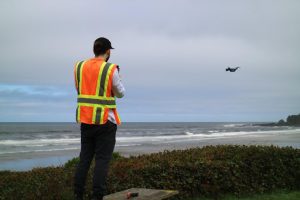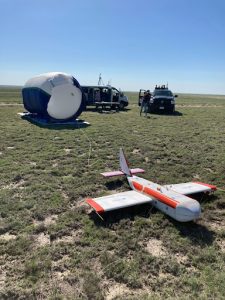The OAR ORTA UxSRTO is no longer operating.
For further information, please visit The Office of Marine and Aviation Operations (OMAO) Uncrewed Systems Program webpage.




Address critical data gaps
Facilitate UxSRTO application
Evaluate ship-launched UxSRTO technology and infrastructure
Develop extended visual line of site operations
Analyze the value of high-altitude observations
Develop UxSRTO CONOPS for conducting pinniped survets in remote regions
Accelerate transition of UxSRTO capabilities from research to operations
Provide expertise and resources for UxSRTO research and development
Uncrewed Systems Research Transition Office
What We Do
Uncrewed Systems Research Transition Office (UxSRTO) can revolutionize NOAA’s ability to monitor and understand the global environment. There is a key information gap today between instruments on Earth’s surface and on satellites – UxSRTO can bridge that gap. Operated by remote pilots and ranging in wingspan from less than six feet to more than 115 feet, UxSRTO can also collect data from dangerous or remote areas, such as the poles, oceans, wildlands, volcanic islands, and wildfires. Better data and observations improve understanding and forecasts, save lives, property, and resources, advancing NOAA’s mission goals.
Operated remotely, UxSRTO can collect critical observations from dangerous or remote areas, such as the poles, oceans, wildlands, storm damaged areas, volcanic islands, and wildfires. Demonstrating extraordinary capabilities for acquiring data in such challenging environments, matured UxSRTO technologies provide a transformative capacity to enable NOAA’s scientists to better perform their missions. UxSRTO advances NOAA’s goals of preserving lives, property, and environmental resources by enhancing scientific understanding, increasing forecast accuracy, and providing safer, more efficient earth and wildlife observations.
NOAA’s Alaska Fisheries Science Center’s (AFSC) studies Alaska’s marine ecosystems to ensure the sustainable use and conservation of living marine resources in federal waters. A recent study done by NOAA scientists focuses on surveying ice seals, with the primary goal of deploying non-invasive, low-disturbance methods for monitoring the body condition of Arctic seals as an indicator of population health and productivity. During April 2022, researchers with the The Polar Ecosystems Program (PEP) embarked on the NOAA AFSC ice seal research expedition aboard the NOAA Ship Oscar Dyson in the eastern Bering Sea. (Video/Credit: AFSC). Read more in our article, click here.
Check Out Our Newest Videos
Check Out the Highlights of UxSRTO
The UxS Research Transition Office (UxSRTO) is helping NOAA realize the potential these systems offer by supporting innovative research and development (R&D) of UxS technologies across NOAA’s broad mission space.
Current HighlightsWhat's Happening In the News


NOAA Announces $6.4 Million in Funding for Innovative Uncrewed Systems Projects
Uncrewed aircraft and marine systems have great potential to enhance and expand the ways that NOAA meets its mission to understand and predict changes in climate, weather, ocean and coasts. NOAA’s Uncrewed Systems Operations Center (UxSOC) and Uncrewed Systems Research Transition Office (UxSRTO) are partnering to support and facilitate the research, development and transition to operations of uncrewed systems (UxS) across the agency. To that end, the two NOAA offices are funding 12 innovative projects, with a focus on


High-altitude Operational Returning Unmanned System (HORUS) Acquires Measurements at Altitude of 90,000 ft (MSL)
Principal Investigator: Dr. Colm Sweeney and Co-Principal Investigator: Dr. Bianca Baier (GML) The NOAA Global Monitoring Laboratory (GML) AirCore has revolutionized high-altitude trace gas sampling to ~30 km (> 98% of atmosphere) in the past decade. These trace gas profiles provide valuable information for satellite validation and understanding of atmospheric composition in the lower-middle stratosphere that are unreachable by most aircraft. The AirCore — a 100-m long coiled tube — is a passive whole-air sampling


NOAA Model Incorporates sUAS Data for First Time to Improve Hurricane Forecasts
For over 30 years, NOAA has utilized reconnaissance aircraft to obtain measurements within tropical cyclones (TCs), including hurricanes in the Atlantic and Gulf of Mexico. These platforms have proven extremely valuable for furthering TC research and improving forecasts. Any data that improves tropical cyclone forecasts in turn improves tropical cyclone watches, warnings, and relevant evacuation information.
The recent advent of small Uncrewed Aircraft Systems (sUAS) are being evaluated for their potential to enhance the reconnaissance data gathered by NOAA by operating in hazardous regions where conventional aircraft cannot fly.
